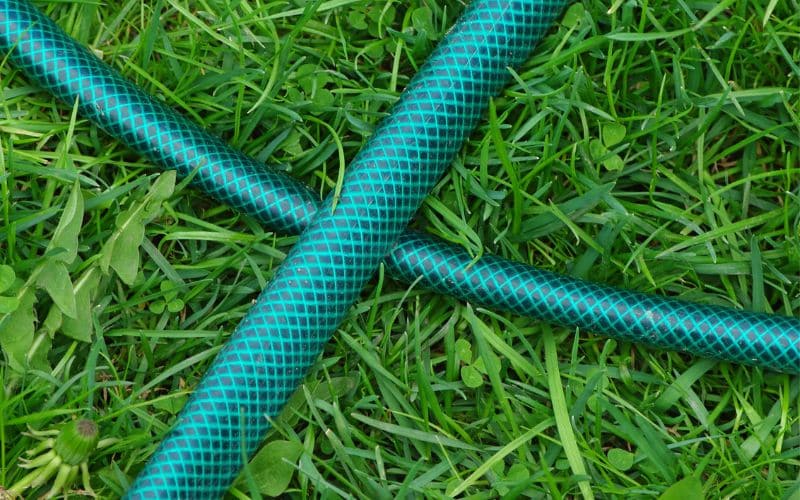
For Canadian green thumbs and homeowners, a garden hose is an indispensable tool in the realm of landscaping and lawn maintenance, playing a crucial role in preserving the verdant beauty of our gardens. Yet, a common query that often arises is about the durability of a garden hose, especially when it is laid underground. In this discussion, we will navigate through the myriad factors that can impact the lifespan of a garden hose and offer practical tips to prolong its service life.
Understanding the Types of Garden Hoses
Recognizing the different types of garden hoses available is the first step towards understanding their lifespan. Here are some of the most common types:
Utility Level I Vinyl (PVC) Garden Hose: This is the most commonly purchased garden hose due to its economical and lightweight properties. It’s ideal for light watering and is usually reinforced with polyester mesh. However, it needs to be replaced every 2 or 3 years and is best suited for mild climates.
Utility Level II Rubber (EPDM) Garden Hose: This type of hose is more durable and can withstand higher water pressure, making it suitable for more intensive use.
Soaker Garden Hose: These hoses are designed to slowly seep water into your garden or lawn, providing a deep, thorough watering without the need for constant supervision.
Sprinkler Hoses: These hoses are equipped with tiny holes along their length, allowing them to double as a sprinkler system. They’re great for watering large areas.
Coiled Hose: Coiled hoses are designed to retract back into a compact coil when not in use, making them easy to store and ideal for small gardens or patios.
Hose for Recreational Vehicles (Campers, RVs, and Boats): These hoses are designed specifically for supplying water to recreational vehicles. They are often reinforced to obtain higher burst pressure ratings.
Flat Hose: Flat hoses are designed to be lightweight and easy to store. When filled with water, they become round, but once the water is drained, they flatten for easy storage.
Burst Pressure Rating and Lifespan
The material of a garden hose significantly impacts its burst pressure rating, which in turn affects its lifespan. For instance, a vinyl hose with minimal reinforcement can hold up to 150 PSI, while a commercial-grade rubber hose can withstand up to 500 PSI. This higher pressure rating means that rubber hoses can endure more temperature changes and water pressure than their vinyl counterparts, potentially leading to a longer lifespan, even when buried underground.
The Impact of Weather Conditions
Weather conditions, particularly temperature fluctuations, can significantly impact the lifespan of a garden hose. In colder climates, freezing temperatures can cause hoses to crack, especially if they are not stored properly. It’s crucial to disconnect the hose from the spigot, detach all watering accessories, and drain it thoroughly before storing it for the winter. Ideally, the hose should be stored in an environment that stays above freezing, such as indoors in a room temperature location. This helps maintain the hose’s flexibility and resistance to kinks.
On the other hand, exposure to intense sunlight and heat can also be detrimental. Prolonged exposure to UV rays can lead to ozone deterioration, causing the hose material to degrade over time. This is particularly relevant for hoses left out in the sun during the warmer months. To prevent this, it’s recommended to coil the hose and store it in a shaded area after use.

Care and Maintenance
Proper care and maintenance can significantly extend the lifespan of a garden hose. It’s recommended to store hoses in the shade to prevent ozone deterioration and to avoid any leftover water from getting heated by the sun, which could deteriorate the lining. Hoses should be stored without bends or kinks to prevent cracking, especially during cold weather. Before temperatures reach freezing, it’s advisable to drain hoses and store them inside a basement, garage, or shed. Drained hoses coil more easily, reducing the risk of damage.
The Role of Hose Savers
A hose saver is a wire-reinforced section at the end of the hose that absorbs tension when the hose is pulled too tightly, preventing damage where the hose attaches to the faucet. This feature can be particularly beneficial for hoses buried underground, where pulling and tension might be more prevalent.
Antimicrobial Protection
For hoses designed to carry drinking water, antimicrobial protection within the lining is a common feature. This protection can prevent the growth of bacteria, potentially extending the lifespan of the hose.
Conclusion
In conclusion, the lifespan of a garden hose buried underground depends on various factors, including the type of hose, its burst pressure rating, local weather conditions, and how it’s cared for. By understanding these factors and taking the necessary steps for proper maintenance, you can ensure that your garden hose serves your gardening needs for many years to come.
Colin Macmillan is a seasoned entrepreneur and the CEO of Riverwood Landscape, a leading landscaping company based in Canada. He has been at the helm of the company since leaving high school, demonstrating his strong leadership skills and business acumen.
Colin’s expertise lies in various aspects of landscaping, including lawn care, interlocking, sod installation, and commercial maintenance. His hands-on approach and dedication to the craft have been instrumental in building Riverwood Landscape into a reputable brand.
One of his most notable achievements is the creation of a successful landscape franchise that services multiple locations. This accomplishment underscores his strategic thinking and ability to scale operations effectively.
Colin has also had the privilege of working with Guelph Hospital for landscaping and maintenance, a testament to the trust and reliability that his company has earned over the years.
His professional mission is to offer the best services and experiences for customers, a goal that he tirelessly pursues. Colin’s commitment to excellence and customer satisfaction continues to drive the growth and success of Riverwood Landscape.








